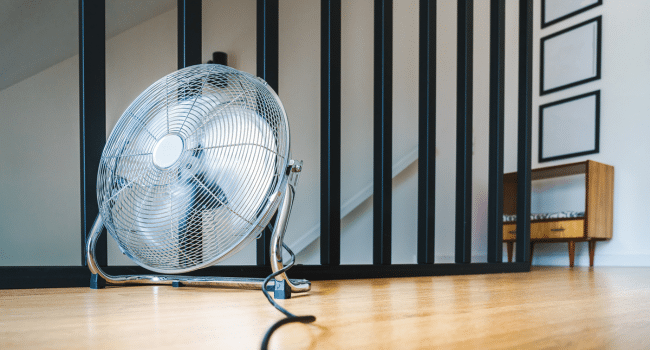Table of Contents
A well-positioned circulation fan can transform your living space into a comfortable haven while reducing energy costs throughout the year. Understanding how to optimize your air circulation fan performance will make every season more comfortable and cost-effective. The correct placement and operation of a circulation fan can reduce your reliance on air conditioning while enhancing heating efficiency during colder periods.
Understanding Your Circulation Fan’s Year-Round Benefits
Most people think of fans as summer-only appliances, but air circulating fans provide valuable benefits in every season. During summer months, these devices create a wind-chill effect that makes you feel cooler without actually lowering the room temperature. In winter, they help redistribute warm air that naturally rises to the ceiling.
1)Spring: Setting the Foundation for Year-Round Comfort
Spring offers the perfect opportunity to prepare your circulation fans for optimal performance throughout the year.
Cleaning and Maintenance for Peak Performance
Start your spring fan preparation with thorough cleaning. Dust accumulation reduces efficiency and can cause unnecessary noise. Remove dust from blades, motor housing, and grilles using a soft cloth or vacuum attachment. Check for loose screws or wobbling that might indicate worn bearings.
Replace any worn components before heavy-use seasons arrive. Lubricate moving parts according to the manufacturer’s specifications, and ensure all electrical connections remain secure.
Optimal Spring Positioning and Settings
During spring, position your air circulation fan to promote gentle air movement throughout your living spaces. Set ceiling fans to rotate counterclockwise at moderate speeds to create a subtle breeze without overwhelming comfort.
For portable circulation fans, experiment with different locations to find spots that provide maximum coverage without creating uncomfortable air currents.
2)Summer: Maximizing Cool Air Distribution
Summer demands maximum efficiency from your air circulating fan system.
Strategic Placement for Maximum Cooling
Position your circulation fans to work in conjunction with your air conditioning system, rather than against it. Place fans near air conditioning vents to help distribute cool air throughout larger spaces. This combination enables you to raise your thermostat setting by several degrees while maintaining the same level of comfort.
Create cross-ventilation by positioning fans near windows during cooler evening hours. This technique draws cool night air into your home and expels warm air.
Speed and Direction Optimization
Run ceiling fans counterclockwise at higher speeds during summer months. This direction creates a downdraft that enhances evaporative cooling on your skin, making you feel up to 8 degrees cooler without changing the actual room temperature.
For portable fans, experiment with different speeds throughout the day. Higher speeds work well during peak heat hours, while lower speeds provide comfortable circulation during cooler periods.
3)Fall: Transitioning to Heating Season Support
Fall preparation focuses on adjusting your circulation fan strategy to support heating systems rather than cooling systems.
Preparing for Heating Season
Before cold weather arrives, reverse the ceiling fan direction to clockwise rotation. This change creates an updraft that pulls cool air up and pushes warm air down from the ceiling. The result is better heat distribution and improved heating system efficiency.
Clean and inspect fans thoroughly before use during the heavy heating season.
Energy-Efficient Heat Distribution
Position portable air circulation fans to help move warm air from heating sources throughout your living spaces. Place fans near radiators, baseboard heaters, or heat pump outlets to distribute warmth more effectively.
Use lower fan speeds during fall transition periods to prevent heat loss through windows while maintaining comfortable circulation.
4)Winter: Enhancing Heating Efficiency
Winter operation requires a careful balance between air circulation and heat retention.
Clockwise Rotation for Heat Redistribution
Set ceiling fans to rotate clockwise at low speeds during winter months. This gentle updraft pushes warm air down from the ceiling without creating cooling drafts. The result is a more even temperature distribution and reduced heating costs.
Strategic Winter Positioning
Position air circulating fans away from seating areas to avoid creating unwanted drafts. Focus on moving air near exterior walls and windows where cold air tends to accumulate.
Advanced Techniques for Maximum Efficiency
Several advanced techniques can significantly improve your circulation fan’s effectiveness throughout the year.
Multi-Fan Coordination
Coordinate multiple circulation fans throughout your home to create comprehensive air movement patterns. Use ceiling fans for general circulation, and position portable fans for targeted climate control in specific areas.
Timer and Speed Control Integration
Install timer controls and variable speed switches to optimize fan operation throughout different times of day. Program fans to run at higher speeds during peak temperature periods and lower speeds during moderate conditions.
Key Benefits of Proper Circulation Fan Use
Implementing these seasonal strategies provides numerous advantages:
- Reduced energy costs through improved HVAC efficiency
- More consistent temperatures throughout your home
- Enhanced indoor air quality through better air movement
- Extended HVAC system lifespan through reduced workload
- Improved comfort levels in all seasons
- Lower environmental impact through reduced energy consumption
Essential Maintenance Schedule
Maintain peak performance with regular care:
- Monthly blade cleaning during heavy-use seasons
- Quarterly motor and bearing inspection
- Semi-annual deep cleaning and lubrication
- Annual electrical connection inspection
- Seasonal direction and speed adjustments
Conclusion
Maximizing the effectiveness of your air circulation fan requires understanding how different seasons demand different approaches to air movement. From spring preparation to winter heat redistribution, each season presents opportunities to enhance comfort while lowering energy costs. By following these seasonal strategies and maintenance schedules, your circulation fans will provide reliable and efficient service throughout the year, supporting your primary heating and cooling systems.
